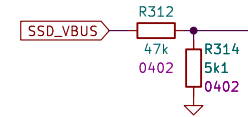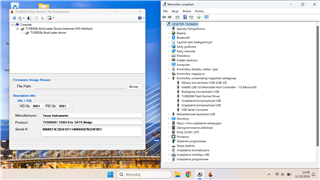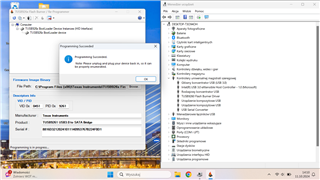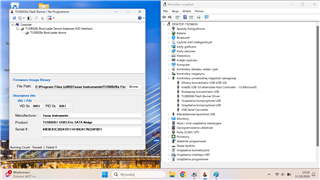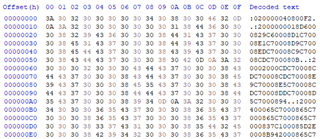Other Parts Discussed in Thread: TUSB9261, TUSB9260, SN74HCT244
Tool/software:
Hello there,
I designed my own board with TUSB9261 chip, external 40MHz clock source (not crystal) and M.2 SSD slot. Also in my circuit I can flash SPI memory without interferences from TUSB9261. There is a bidirectional quad switch. All other components are exactly this same as in evaluation board. Board is self powered with power sequention where 3V3 is enabled for bridge and M.2 at the same time. nGRST signal getting high after some miliseconds after 3V3.
I've bypassed that SPI switch (and desoldered it) for maximum straight connection betwen SPI memory and SATA bridge.
I've checked power sequention and clock source freq and there are perfectly fine.
Bridge in Device Manager have name TUSB9260 (like older brother). Btw. Windows 11 only. That's weird because chip is 9261.
On SPI signals I'm seeing sequention on start "0x05 0x00 0x00" and "0x03 0x00 0x00 0x00 0x00 0x00 0x00" on MISO and MOSI at the same time.
On SATA there is no any signal.
Pin GPIO10 named SATA_EN have lower than 0,5V.
I've tried to use TUSB9260 and TUSB9261 burning software with pin swapping but without any results.
I can program succesfully but I'm not seeing SATA disk in Windows and SATA signals on board. Firmware 1.06v
What I can check next to make it works?
It is possible to flash SPI memory separatelly?


